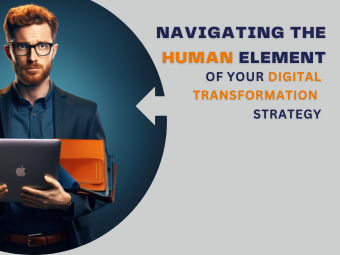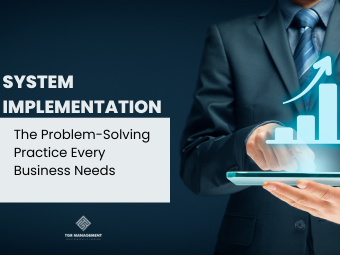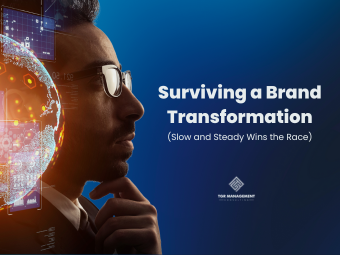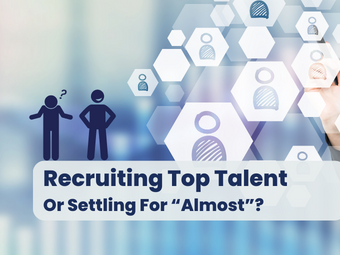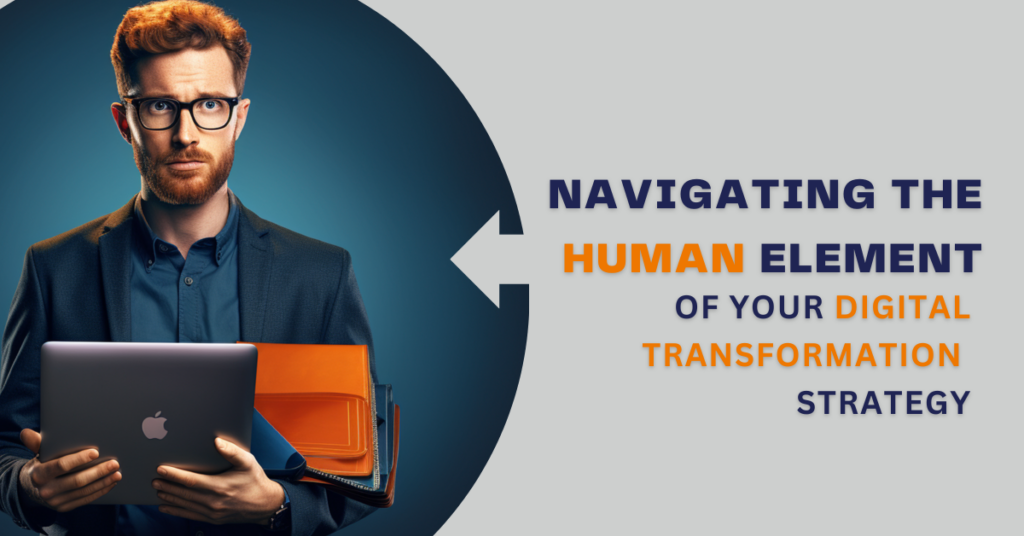
The most formidable hurdle in developing a Digital Transformation Strategy often emerges from the least expected place: the human element. The challenge isn’t always about securing the budget, choosing the right technology, or even the system development and integration.
Instead, it often boils down to the seasoned sales rep who eyes automated email campaigns with suspicion, preferring the ‘personal touch’ of a phone call. Or the accountant who has been religiously following a paper process for decades, wondering how digitization could bring anything but disruption to their well-oiled routine. More recently, it is the look of concern on the face of a customer service representative when you tell them your company is using a chatbot to lighten their load.
To survive as a business, you must keep up with the latest innovations, systems, and technologies. Implementing technology changes just happens to be one of the most complex and frustrating challenges a CEO can face. Let’s discuss navigating that human element while successfully implementing a digital transformation strategy.
Company Culture: The Catalyst for Evolution or Hesitation
Why do we resist change? Fear, confusion, and frustration. When people hear that new technology is being integrated into a strategy, they tend to have a knee-jerk reaction. You hear questions like:
“Why is this change even necessary?”
“Is this going to make my life harder?”
“Do I really have to take the time to learn a BRAND NEW tool on top of my daily responsibilities?”
In the past, we discussed overcoming this problem by introducing the technology to your most adaptable team members. This is a strategy that Promises2Kids used to introduce their team to Salesforce. Creating champions at each level in each department is an excellent strategy, whether you’re trying to implement them quickly under pressure or make small incremental changes over time. And it should be easy if you’ve already developed a company culture that rewards adaptability, innovation, continuous learning, and an openness to new ideas.
Starbucks has done this with their Artificial Intelligence technology, Deep Brew (you can’t make this stuff up). It accurately predicts the number of required baristas during its busiest hours. This has caused the chain’s efficiency to reach new heights. This is an interesting example, especially with recent events. Starbucks had established a company culture around doing “everything through a lens of humanity”.
It goes back to culture. It is essentially to establish a company culture where team members feel safe to express their concerns and feel as though they can trust their leadership. When you have an environment that does that AND encourages innovation and new ideas, overcoming the human obstacle is much easier.
Introducing Your Team to New Tech
AI is in danger of becoming a dirty word. Or rather, a dirty term – seeing as it’s two words. The discussions around this new technology inevitably end up in the same place: the dangers of AI, the problems with AI, and how AI is stealing people’s jobs. While these are meaningful discussions, their prevalence can make employees nervous and resistant to adopting this new technology.
AI should be seen as a tool to augment, rather than replace: to innovate rather than stagnate. That’s why I like to call it “assisted intelligence”. But, with the amount of misinformation flying around, it can be hard to explain that.
There are two things you’ll need to combat this issue.
First, you must ensure that you are as informed as possible on the pros and cons of implementing a new technology solution. Two, you must provide the why. You’d be amazed at how many of your employees may have an easier time adapting to a new system or technology when they clearly understand why it’s here, to begin with. It goes back to those questions we discussed earlier:
“Why is this change even necessary?”
Because we discovered a problem and this is our solution.
“Is this going to make my life harder?” and “Do I really have to take the time to learn a BRAND NEW tool on top of my daily responsibilities?”
Here is some comprehensive information about how this will be implemented, how it works, and how we will make this transition easier for you.
The last thing you want to do is skirt around concerns and questions raised by your employees. Make sure you have a solid foundation to address them.
Finding the Framework
It’s not enough to explain the method behind the madness to your team. A structured approach proves invaluable. One successful example of these structures is STEP. The STEP framework was devised during a three-year research project involving ten knowledge-intensive companies at the forefront of AI use. This framework was crafted as a structured response to the challenges organizations and their employees faced as they attempted to adapt to AI.
The framework is simple:
Segmentation:
A focused inquiry into how AI intersects with diverse tasks, aiding in categorizing tasks based on AI’s potential for automation or augmentation.
Transition:
A strategic migration of work roles, accentuating deepening or upgrading roles to resonate with AI’s augmentation and automation capabilities.
Education:
A continuum of learning enables employees to stay abreast of AI’s evolving prowess and fine-tune their skills in alignment with their transitioning roles.
Performance:
A recalibrated evaluation paradigm reflecting the dynamic interplay between AI and employee tasks, fostering a culture of continuous feedback and improvement.
This framework has already succeeded in implementing AI into everyday business practices. HealthCo, MarkCo, and UrbanGov are 3 examples of businesses that played a crucial role in developing this process and implementing a digital transformation strategy.
Lead By Example
A team is only as strong as its leader, and if leadership questions or doubts the new innovations they’re implementing, it can harm the process. Conversely, he structured approach to AI adoption, as seen in HealthCo, MarkCo, and UrbanGov through the STEP framework, is a testament to leadership’s pivotal role. When leaders are hands-on in orchestrating structured approaches toward AI adoption, it signals a firm commitment to evolving in stride with technological advancements. This can encourage a team to delve into a digital transformation with a sense of purpose and support.
Another example I appreciate is Microsoft’s CEO, Satya Nadella, whose “learn-it-all” (as opposed to “know it all”) culture advocacy has fostered an environment conducive to continuous learning and tech adaptation. No one likes a know-it-all – because no one can know-it-all all. When your employees are tech geniuses, pushing them toward learning new things and making discoveries is precisely the kind of culture that encourages the development of new technology solutions.
There’s just no getting around it: the way we lead our teams has an incredible impact on their ability to perform and, of course, adapt.
Tiffany Rosik, founder and CEO of TGR Management Consulting, advises Fortune 1000 companies on aligning business and technology initiatives to achieve growth. Tiffany goes beyond project best practices by coaching Project Team Leaders on team dynamics and techniques to establish a self-sustaining model that creates a consistent experience and produces results. Connect or follow Tiffany Rosik on LinkedIn.

